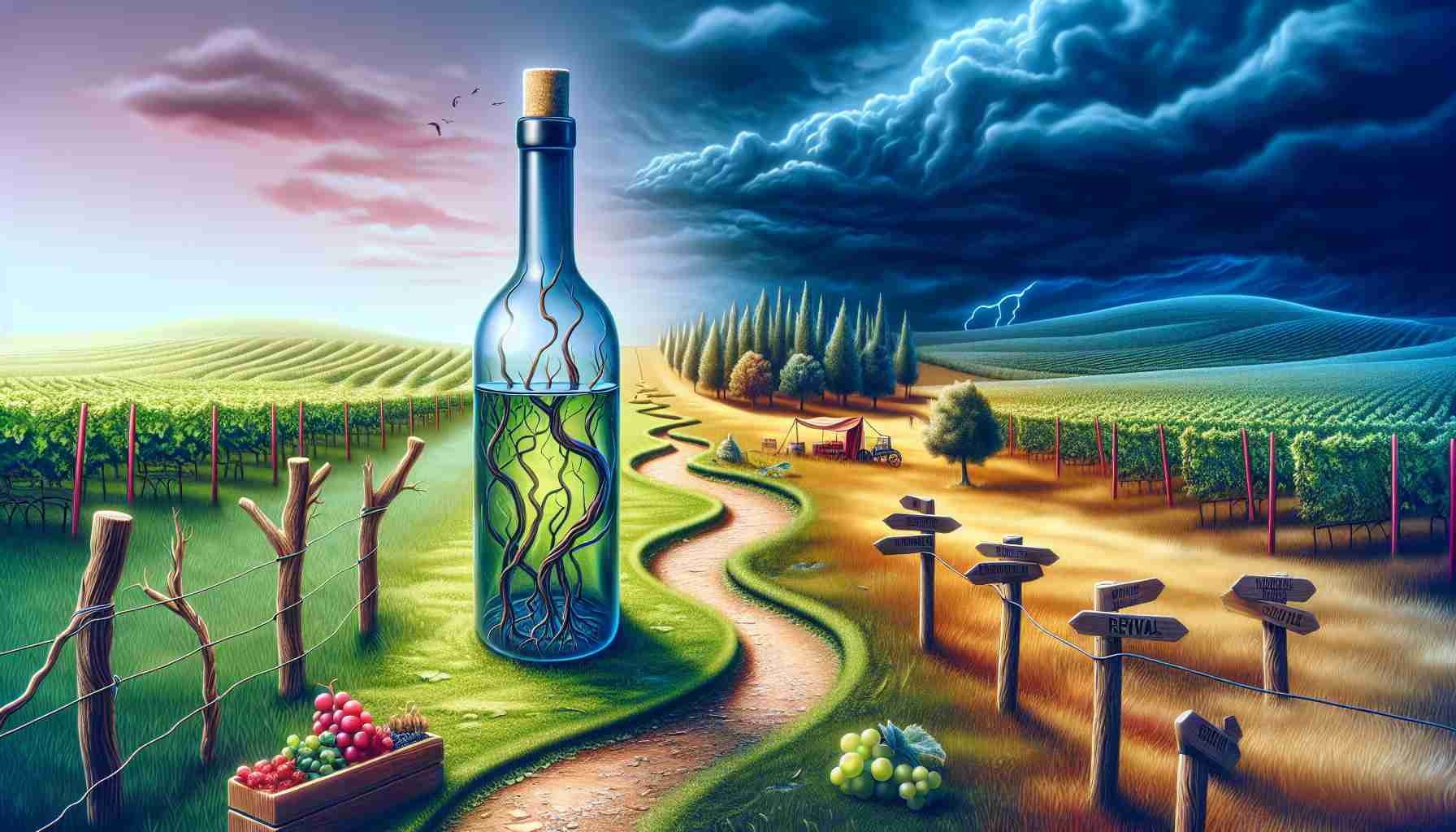- The wine industry is facing challenges due to an aging consumer base and changing preferences among younger generations.
- Innovative strategies are being developed to attract millennials and Gen Z through targeted marketing and modern branding.
- Successful engagement with new consumers will focus on quality, unique experiences, and adapting product offerings.
- Despite current trends, there is optimism that younger consumers’ tastes will evolve, revitalizing interest in wine.
- Embracing change and recognizing industry struggles are vital for wineries to survive and thrive in a shifting market.
The latest findings from Silicon Valley Bank reveal a troubling trend for the wine industry—one that has long relied on the loyalty of older generations while ignoring the evolving tastes of younger consumers. This oversight is pushing the once-thriving sector into a precarious position.
Yet, amid the somber news, a glimmer of hope emerges. Innovators within the industry are rising to the challenge, shifting their focus toward attracting millennials and, eventually, Gen Z drinkers. With strategic changes in marketing and product offerings, these pioneers believe it’s not too late to reignite interest in wine among younger audiences.
On a recent episode of the “VinePair Podcast,” industry experts dissect this report and explore potential turning points for wineries. Their insights reveal that recognizing the industry’s struggles is the first step toward meaningful transformation. The discussion highlights successful strategies that emphasize quality, unique experiences, and modern branding to engage new consumers.
Interestingly, while millennials may not be sipping as much wine currently, there’s a palpable anticipation that their tastes will evolve over time, paving the way for a resurgence.
As the wine industry grapples with these challenges, the key takeaway is clear: embracing change is crucial for survival. By acknowledging the existing problems and adapting to the shifting landscape, wineries stand a fighting chance to rejuvenate their appeal.
So, whether you’re a connoisseur or just a curious drinker, keep an eye on how the industry adapts. Exciting times lie ahead!
Is the Wine Industry Ready for a Revolutionary Transformation?
Current Trends and Innovations in the Wine Industry
The wine industry is experiencing a significant transformation as it faces the dual challenges of declining interest from younger consumers and the need for modernization in marketing strategies. Recent trends indicate a concerted effort by wineries to adapt to the preferences of millennials and Gen Z, emphasizing quality, sustainability, and unique consumer experiences.
Key Innovations
– Sustainable Practices: Many vineyards are adopting organic and biodynamic farming methods to appeal to eco-conscious consumers. This shift not only enhances grape quality but also aligns with the values of younger drinkers who prioritize sustainability.
– Canned Wine and Ready-to-Drink Options: The rise of canned wine and pre-mixed cocktails demonstrates a shift towards convenience and portability, making wine more accessible for social occasions.
– Digital Engagement: Wineries are leveraging social media and digital platforms to connect with younger audiences, employing influencers and interactive campaigns that resonate with millennial and Gen Z lifestyles.
Insights and Market Forecasts
– Growth of Online Sales: The pandemic accelerated the growth of wine sales through e-commerce, a trend that is expected to continue in the coming years.
– Emergence of Wine Subscriptions: Subscription services that deliver curated wine selections to consumers’ doors are gaining popularity, catering to the younger demographic’s desire for convenience and exploration.
Potential Challenges
– Brand Loyalty vs. Exploration: Younger drinkers tend to favor exploring new beverages over maintaining brand loyalty, making it essential for wineries to innovate continuously.
– Price Sensitivity: As younger consumers often have less disposable income, wineries need to consider pricing strategies to remain attractive.
Frequently Asked Questions
1. What are wineries doing to attract younger drinkers?
Wineries are innovating their marketing strategies by focusing on sustainability, convenience (like canned wine), and engaging with consumers through digital platforms and social media campaigns. Many are also creating unique tasting experiences and events tailored to younger audiences.
2. How important is sustainability in the wine industry today?
Sustainability is becoming increasingly important, with many consumers prioritizing eco-friendly practices. Wineries that adopt sustainable farming methods may see a competitive advantage as they align more closely with consumer values, particularly those of younger generations.
3. What role does technology play in the current wine market?
Technology plays a critical role in the wine market today, from e-commerce platforms boosting online sales to social media engagement campaigns. Wineries are utilizing data analytics to understand consumer behavior and preferences better, allowing for targeted marketing efforts.
For further insights into wine industry trends and innovations, check out Wine Spectator and stay updated on what’s happening in the world of wine!
